 |
King of Chemicals Manufacturers |
Specifications, Properties, Uses, SDS of Trehalose USP NF BP Ph Eur EP FCC Food Grade Manufacturer Supplier Exporter Wholesale & Small Packs, CAS Number 99-20-7 Anhydrous and 6138-23-4 Dihydrate. |
|
| King of Chemicals has several associated companies having accreditations like cGMP, GLP - FDA Approved Good Manufacturing Practice and Good Laboratory Practice of WHO standard, ISO-9001, ISO-14001, ISO/IEC 17025, ISO ISO-45000, HACCP, FSSC 220000, FSSAI, "REACH" Registered, Kosher & Halal Certified. e-CTD and DMF support can be made available if needed. We offer USP NF BP Ph Eur EP IP JP Analytical Reagent FCC Food Grade Chemicals & Nutraceuticals. | |
        |
|
Muby Chem Pvt. Ltd. is a several decades old group of companies, engaged in manufacturing, supplying, distributing, wholesale supplies of Trehalose USP NF BP Ph Eur EP FCC Food Grade for actual users, including retail or small pack supplies for research and development work.
We supply fine and speciality chemicals, pharmaceutical excipients, mineral fortifiers in chemically pure, analytical reagent grade, IP BP USP Ph Eur EP JP and other pharmaceutical grade monograph including FCC Food grade chemicals and Nutraceuticals at best prices. We and/or our associated units have all the facilities to supply as per cGMP standard observing good manufacturing practice and good laboratory practice. We can assure low microbial count and also offer a test certificate for the same. We maintain warehouses across USA, India, and UAE. Our group exports to USA, Canada, Mexico, Argentina, Brazil, Chile, Korea, Malaysia, Thailand, Indonesia, Europe, and several other parts of the world. We supply in wholesale container loads to small pack of few grams. Solid products may be specified for it size and shape as desired by the buyer.


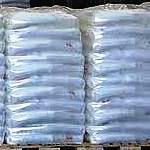

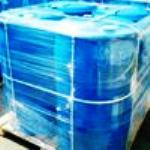
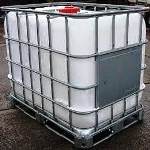
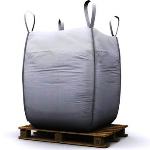
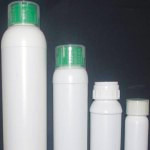
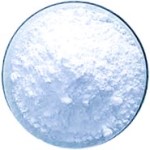
Trehalose CAS Number 99-20-7 Anhydrous and 6138-23-4 Dihydrate
For Properties Specifications Uses of Trehalose Click Properties, Specifications, Uses, Price, Process of Trehalose Manufacturer.
For For SDS MSDS Sheet of Trehalose Click SDS Safety Data Sheet MSDS Sheet of Trehalose Manufacturer.
The Properties, Specifications, Monograph and Uses of Trehalose:
Trehalose is a sugar consisting of two molecules of glucose. Trehalose has high water retention capabilities, and is used in food, cosmetics and as a drug.
Specifications of Trehalose Dihydrate BP Ph Eur Grade:
C12H22O11-2H2O --- 378.3 --- CAS 6138-23-4
DEFINITION
α-d-Glucopyranosyl α-d-glucopyranoside dihydrate (α,α-trehalose dihydrate). It is obtained by enzymatic modification of starch.
Content: 97.0 per cent to 102.0 per cent (anhydrous substance).
CHARACTERS
Appearance: White or almost white, crystalline powder.
Solubility: Freely soluble in water, slightly soluble in methanol, practically insoluble in ethanol (96 per cent).
IDENTIFICATION
A. Infrared absorption spectrophotometry.
Comparison trehalose dihydrate CRS.
B. Dissolve 2 g in 5 mL of water. To 1 mL of this solution add 0.4 mL of a 50 g/L solution of α-naphthol in ethanol (96 per cent) and mix thoroughly. Carefully add 2& mL of sulfuric acid. A violet colour develops at the interface.
C. Dissolve 1 g in 25 mL of water. To 2 mL of this solution add 1 mL of dilute hydrochloric acid and mix. Keep the solution for 20 min at room temperature. Add 4 mL of a 40 g/L solution of sodium hydroxide and 2 mL of a 40 g/L solution of glycine and mix. Heat the solution in a water-bath for 10 min. No brown colour develops.
TESTS
Solution S: Dissolve 10.0 g in carbon dioxide-free water prepared from distilled water and dilute to 100.0 mL with the same solvent.
Appearance of solution: Solution S is clear and colourless.
pH: 4.5 to 6.5 for solution S.
Specific optical rotation: + 197 to + 201 (anhydrous substance), determined on solution S.
Related substances: To pass the test by Liquid chromatography.
Limits:
-impurities A, B: for each impurity, not more than 0.5 times the area of the principal peak in the chromatogram obtained with reference solution (b) (0.5 per cent);
-unspecified impurities: for each impurity, not more than the area of the principal peak in the chromatogram obtained with reference solution (c) (0.2 per cent);
-total: not more than the area of the principal peak in the chromatogram obtained with reference solution (b) (1.0 per cent);
-disregard limit: 0.5 times the area of the principal peak in the chromatogram obtained with reference solution (c) (0.1 per cent).
Chlorides: Maximum 125 ppm.
Sulfates: Maximum 200 ppm.
Soluble starch: Dissolve 1 g in 10 mL of water. Add 0.1 mL of iodine solution. No blue colour develops.
Water: 9.0 per cent to 11.0 per cent, determined on 0.10 g.
Sulfated ash: Maximum 0.1 per cent, determined on 1.0 g.
Microbial contamination:
If intended for use in the manufacture of parenteral preparations:
-TAMC: acceptance criterion 100 CFU/g.
If not intended for use in the manufacture of parenteral preparations:
-TAMC: acceptance criterion 1000 CFU/g;
-TYMC: acceptance criterion 100 CFU/g;
-absence of Escherichia coli;
-absence of Salmonella.
Bacterial endotoxins:
If intended for use in the manufacture of parenteral preparations without a further appropriate procedure for the removal of bacterial endotoxins:
-less than 4 IU/g for parenteral preparations having a concentration of 100 g/L or less of trehalose dihydrate;
-less than 2.5 IU/g for parenteral preparations having a concentration of more than 100 g/L of trehalose dihydrate.
Specifications of Trehalose USP NF Grade:
C12H22O11 --- 342.30
C12H22O11- 2H2O --- 378.33
α-d-Glucopyranosyl α-d-glucopyranoside.
Anhydrous --- CAS 99-20-7
Dihydrate --- CAS 6138-23-4
DEFINITION
Trehalose is a stable, nonreducing disaccharide with two glucose molecules linked in an α,α-1,1 configuration. It is obtained through enzymatic conversion of food-grade starch. It contains NLT 97.0% and NMT 102.0% of trehalose (C12H22O11 ), calculated on the anhydrous basis.
IDENTIFICATION
A. Infrared Absorption
B.
Sample solution: 400 mg/mL of Trehalose
Analysis: Add 0.4 mL of a solution containing 1-naphthol in 95% alcohol (1 in 20) to 1 mL of the Sample solution. Gently add 2 mL of sulfuric acid to the solution.
Acceptance criteria: A violet color develops at the interface between the two solutions. C.
Glycine solution: 40 mg/mL of glycine
Sample solution: 40 mg/mL of Trehalose
Analysis: Add 1 mL of diluted hydrochloric acid to 2 mL of the Sample solution. Allow to stand for 20 min at room temperature. Add 4 mL of sodium hydroxide TS and 2 mL of Glycine solution to the Sample solution. Heat the solution for 10 min in boiling water.
Acceptance criteria: A brown color does not develop.
Residue on Ignition: NMT 0.1%, determined on 2.0 g of Trehalose
Related Substances: To pass the test by Chromatographic system
Acceptance criteria: For the Sample solution, the areas of any peaks corresponding to maltotriose and other polysaccharrides and eluting before trehalose are NMT half of the area of the peak corresponding to trehalose in the chromatogram of the Standard solution (0.5%). The areas of any peaks corresponding to glucose and eluting after trehalose are NMT half of the area of the peak corresponding to trehalose in the chromatogram of the Standard solution (0.5%).
Color and Clarity of Solution: To pass the test.
Optical Rotation, Specific Rotation:
Sample solution: 100 mg/mL
Acceptance criteria: +197° to +201° at 20C
Microbial Enumeration Tests and Tests for Specified Microorganisms: The total aerobic microbial count is NMT 100 cfu/g, and the total combined molds and yeasts count is NMT 100 cfu/g. It meets the requirements of the tests for absence of Salmonella species and Escherichia coli.
pH:
Sample solution: 100 mg/mL
Acceptance criteria: 4.5–6.5
Water Determination:
Sample: 0.1 g
Acceptance criteria
Anhydrous: NMT 1.0%
Dihydrate: 9.0%–11.0%
Bacterial Endotoxins Test: If labeled for use in preparing parenteral dosage forms, it also meets the following requirements. The level of bacterial endotoxins is such that the requirement in the relevant dosage form monograph(s) in which Trehalose is used can be met. Where the label states that Trehalose must be subjected to further processing during the preparation of injectable dosage forms, the level of bacterial endotoxins is such that the requirement in the relevant dosage form monograph(s) in which Trehalose is used can be met.
Chloride and Sulfate, Chloride:
Sample: 2.0 g
Acceptance criteria: No more chloride than corresponds to 0.70 mL of 0.01 M hydrochloric acid (NMT 0.0125%)
Chloride and Sulfate, Sulfate:
Sample: 2.0 g
Acceptance criteria: No more sulfate than corresponds to 0.83 mL of 0.005 M sulfuric acid (NMT 0.0200%)
Nitrogen Determination:
Sample: 5.0 g
Analysis: Proceed as directed in Method II, except increase the volume of sulfuric acid for digestion to 30 mL and the volume of the sodium hydroxide solution (2 in 5) to 45 mL.
Acceptance criteria: NMT 0.005%
Soluble Starch:
Sample solution: 10% Trehalose (w/v)
Analysis: Add several drops of iodine TS to the Sample solution.
Acceptance criteria: No blue color develops.
Specifications of Trehalose FCC Food Grade:
C12H22O11-2H2O Formula weight 378.33
CAS: anhydrous 99-20-7
CAS: dihydrate 6138-23-4
DESCRIPTION
Trehalose occurs as a nonhygroscopic, white, crystalline powder. It is obtained through enzymatic conversion of food-grade starch into a stable, nonreducing disaccharide with two glucose molecules linked in an _,_-1,1 configuration. The powder is freely soluble or readily dispersible in water. Trehalose is typically used in its dihydrate form.
Function: Humectant; nutritive sweetener; stabilizer; thickener; texturizer.
Identification: Observe a sample with a light microscope at 50×. Trehalose is composed of colorless, rectangular crystals with a prismatic structure.
Assay: Not less than 98.0% Trehalose, calculated on a dry basis.
Color in Solution: Less than or equal to 0.100.
Lead: Not more than 0.1 mg/kg.
Loss on Drying: Not more than 1.5%.
pH of a 30% Solution: Between 4.5 and 6.5.
Residue on Ignition: Less than or equal to 0.05%.
Turbidity of a 30% Solution: Less than or equal to 0.050
The MSDS-SDS Hazard Statement of Trehalose:
Trehalose Dihydrate and Anhydrous SDS GHS, Safety Data Sheet
MSDS Sheet, Material Safety Data Sheet 07-April-25
Section 1: Chemical Product and Company Identification
Product Name & Other Names: Trehalose Dihydrate and Anhydrous.
CAS Number: 99-20-7 Anhydrous and 6138-23-4 Dihydrate
EINECS EC Code: 202-739-6
Relevant uses and uses advised against (if any): Industrial Manufacturing.
Section 2: Hazards Identification
GHS, Globally Harmonized System Classification in accordance with 29 CFR 1910
Hazard Class and Category Code(s), Regulation (EC) No 1272/2008 (CLP)
Not a hazardous substance or mixture according to Regulation (EC) No. 1272/2008.
This substance is not classified as dangerous according to Directive 67/548/EEC.
Labeling Regulation as per GHS & EC 1272/2008 (CLP) & GHS
GHS Label Elements NONE |
Signal Word: None
Precautionary statements:
P261: Avoid breathing dust/fume/gas/mist/vapors/spray.
P262: Do not get in eyes, on skin, or on clothing.
P281: Use personal protective equipment as required.
P302+P352: IF ON SKIN: Wash with plenty of soap and water.
P304+P340: IF INHALED: Remove victim to fresh air and keep at rest in a position comfortable for breathing.
P305+P351+P338: IF IN EYES: Rinse cautiously with water for several minutes. Remove contact lenses, if present and easy to do. Continue rinsing.
P337+313: If eye irritation persists get medical advice/attention.
Section 3: Composition and Information on Ingredients
Product Name & Other Names: Trehalose Dihydrate and Anhydrous.
CAS Number: 99-20-7 Anhydrous and 6138-23-4 Dihydrate
EINECS EC Code: 202-739-6
Section 4: First Aid Measures
Always seek medical advice after the first aid treatment.
Skin: Rinse with water. Soap may be used. Seek Medical Aid.
Eyes: Wash eyes with plenty of water for at least 15 minutes, lifting lids occasionally. Seek Medical Aid.
Inhalation: Remove to fresh air. If not breathing, give artificial respiration. If breathing is difficult, give oxygen.
Ingestion: If swallowed, induce vomiting immediately after giving two glasses of water. Never give anything by mouth to an unconscious person.
Section 5: Fire and Explosion Data
Flammability of the Product: Non-flammable.
Products of Combustion: Fumes and oxides of Carbon.
Fire Fighting Media and Instructions: Use water spray, alcohol-resistant foam, dry chemical or carbon dioxide. Wear self-contained breathing apparatus for firefighting if necessary. Avoid solid water jet as it can scatter the fire.
Special Information: In the event of a fire, wear full protective clothing and NIOSH-approved self-contained breathing apparatus with full face piece operated in the pressure demand or other positive pressure mode. At high temperatures under fire conditions, it may produce toxic or irritating fumes.
Section 6: Accidental Release Measures
Personal precautions, protective equipment and emergency procedures: Avoid breathing dust/fumes/gas/mist/vapors/spray. Ensure adequate ventilation. Use individual protective equipment (waterproof boots, suitable protective clothing, safety glasses, etc.).
Environmental precautions: Do not let the product enter drains, soil or water sources.
Methods and materials used for containment Cleanup procedures and Storage: Contain spilled material. Do not inhale vapors, mist, or gas. Avoid dust formation. Use a shovel to put the material into a convenient waste disposal container.
Section 7: Handling and Storage
Precautions for safe handling: Apply according to good manufacturing and industrial hygiene practices. Ensure proper ventilation. Wash thoroughly after handling. Do not drink, eat or smoke while handling. Avoid contact with skin, eyes and clothing. Minimize dust generation. Avoid breathing dust/fumes/gas/mist/vapors/spray. Keep container tightly closed. Avoid ingestion and inhalation. Use individual protective equipment (waterproof boots, suitable protective clothing, safety glasses, etc.).
Conditions for safe storage, including any incompatibilities: Store in cool, dry and ventilated area away from heat sources and protected from sunlight in tightly closed original container. Keep air contact to a minimum. Do not leave the material container open. Store protected from heat, sparks and ignition sources and incompatible materials. Avoid inhalation of dust/mist/vapor. Do not store with incompatible materials like oxidizing agents.
Section 8: Exposure Controls/Personal Protection
Exposure Guidelines: This product does not contain any hazardous materials with occupational exposure limits established by the region-specific regulatory bodies.
Engineering Controls: Use process enclosures, local exhaust ventilation, or other engineering controls to keep airborne levels low.
Ventilation System: A system of local and/or general exhaust is recommended to keep employee exposures as low as possible.
Personal Respirators (NIOSH Approved): For conditions of use where exposure to dust or mist is apparent and engineering controls are not feasible, a particulate respirator may be worn.
Skin Protection: Wear protective gloves and clean body-covering clothing.
Eye Protection: Use chemical safety goggles and/or full face shield where dusting or splashing of solutions is possible. Maintain eye wash fountain and quick-drench facilities in work area.
Other Control Measures: Maintain good housekeeping in work area. Handle in accordance with good industrial hygiene and safety practice.
Section 9: Physical and Chemical Properties
Physical state and appearance: White to almost white powder or crystals or granules.
Odor: Not available.
Odor threshold: Not available.
pH: 4.5 to 6.5.
Relative density: No information found.
Melting point/freezing point: 203C (anhydrous) and 97C (dihydrate).
Initial boiling point and boiling range: No information found.
Flash point: No information found.
Auto-ignition temperature: No information found.
Decomposition temperature: No information found.
Upper/lower flammability or explosive limits: No information found.
Vapor pressure: No information found.
Vapor density: No information found.
Evaporation rate: No information found.
Flammability (solid, gas): No information found.
Partition coefficient: n-octanol/water: No information found.
Solubility: Soluble in water and ethanol.
Viscosity: No information found.
Section 10: Stability and Reactivity Data
Stability: It is stable in room temperature in closed containers under normal storage & handling.
Conditions of instability: Incompatible materials, Moisture
Incompatibility with various substances: Avoid high temperatures, sparks, open flames and moisture. Avoid contact with strong oxidizing agents.
Polymerization: Will not occur.
Section 11: Toxicological Information
LD50 Oral - Rat: No information found.
Carcinogenic Effects: Not a reported carcinogen by IARC, NTP, ACGIH, OSHA.
Reproductive toxicity: No information found.
Teratogenicity: No information found.
Developmental Effects: No information found.
Section 12: Ecological Information
Toxicity to fish: No information found.
Mobility: Will likely be mobile in the environment due to its water solubility.
Persistence and Degradability: Unlikely to persist.
Bioaccumulation/ Accumulation: Unlikely to accumulate.
Section 13: Disposal Considerations
Waste Disposal: Waste must be disposed of in accordance with federal, state and local environmental control regulations. Follow all the pollution control rules.
Section 14: Transport Information
Land Transport DOT USA, TDG Canada & ADR/RID Europe: Not controlled.
Sea Transport IMDG/IMO: Not controlled.
Air Transport IATA/ICAO: Not controlled.
Section 15: Other Regulatory Information
USA:
SARA 311/312 Hazards: No SARA hazards.
California Prop. 65 Components: This product does not contain any chemicals known to State of California to cause cancer, birth defects, or any other reproductive harm.
DISCLAIMER: The information and recommendations set forth herein are presented in good faith and believed correct as of the date hereof. It is compiled from various sources, and it is not necessarily all inclusive nor fully adequate in every circumstance. In addition, these suggestions should not be confused with nor followed in violation of applicable laws, regulations, rules, or insurance requirements applicable. This SDS MSDS sheet is intended only as a guide to the appropriate precautionary handling of the material by a professionally trained person using this product. Individuals receiving the information must exercise their independent judgment in determining its appropriateness for a particular purpose. This shall not constitute a guarantee for any specific product features and shall not establish a legally valid contractual relationship. In no case shall our company be liable to loss or damages by the product user.

Trehalose Manufacturers, Suppliers, Exporters, Wholesalers:
King of Chemicals manufacturers

Plot No. 2900/46&47 + 2900/163to167, GIDC, Ankleshwar, Dist. Bharuch, India
India, USA, UAE
TEL: (Office) 91-22-23774610, 91-22-23723564
e-mail: info@kingofchemicals.com
Copyright and Usual Disclaimer is Applicable --- April 7, 2025
If I give you “My Word” Nobody can undo it.
If I sign an “Agreement” my Lawyer will undo it
Our products are for industrial and laboratory use only. The user must test the material before use. We are not dispensing chemists or druggist and do not offer over the counter type (OTC) products for medical use by individuals.
We and our associates manufacture pure chemicals surpassing Monograph Specifications of Analytical Reagent Standards, British & European Pharmacopoeia BP Ph Eur EP Standard, US Pharmacopoeia USP NF Standard, Indian Pharmacopoeia IP Standard, Japan Pharmacopoeia JP Standard, FCC Food Grade Standard. |
|